April 17, 2025 | 00:05 GMT +7
April 17, 2025 | 00:05 GMT +7
Hotline: 0913.378.918
April 17, 2025 | 00:05 GMT +7
Hotline: 0913.378.918
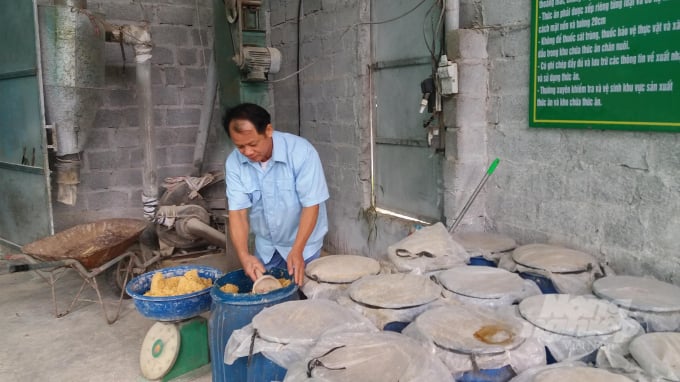
Head heavy from his concerns over the profession, Mr. Nguyen Van Ngu has created a safe, effective and sustainable green farming method. Photo: Dong Van Thuong.
Heeding our request, the staff of Thai Nguyen Sub-Department of Animal Health immediately decided to take our group to visit the farm of Green Animal Husbandry Cooperative (Pha residential group, Luong Son ward, Song Cong city).
Mr. Nguyen Van Ngu, the owner of the farm, welcomed us with open arms. Seeing that we were amazed by the fresh air from the guava orchard without any trace of the signature “farm smell”, Mr. Ngu started telling us his story.
“Having worked as a truck driver for many years, in 2003 I switched to animal husbandry. Farm-scale husbandry was attracting a lot of attention and investment at that time,” said Mr. Nguyen Van Ngu.
The golden age brought him early successes. But only a few years later, the epidemic became uncontrollable and the market price was unstable. Sounders of swine were released from the slaughterhouse, but Mr. Ngu and his wife did not even bother to account for the loss. It was also the time when animal feeds and antibiotics for pigs went rampant in the market.
“Once you’re in the business, persistence is key.” Mr. Ngu lost count of the times he was startled, seeing his family consume the pork products he made. From piglets to swine for sale, pigs in his barn ate antibiotics every day. Reality back then put him in constant concern. After a lot of struggle, research and experiment, he listened to the advice given by his son studying food quality, safety and hygiene, determined to choose a different path.
Mr. Ngu’s idea of a livestock farm following a closed process and biological breeding methods to create organic and safe pork products was openly approved by experts of Thai Nguyen University of Agriculture and Forestry and staff of Thai Nguyen Sub-Department of Animal Health.
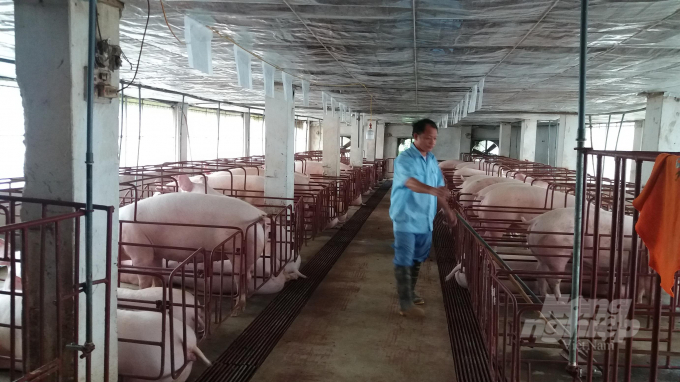
Green animal husbandry has helped Mr. Nguyen Van Ngu's pig litters stay healthy and disease-free. Photo: Dong Van Thuong.
In July 2017, Green Animal Husbandry Cooperative was established. Green animal husbandry, according to Mr. Ngu’s belief, means that the breeding environment, supplies, veterinary drugs, and animal feed must all be safe.
Having the neatly and tidily planned campus as a base Mr. Ngu installed a disinfectant mist system from the entrance to barn door.
Each barn was 24m2 wide, fully equipped with production equipment to raise 18 - 20 adult pigs. The barn had its own waste concentration and treatment area, ensuring no odor or environmental pollution, protecting the health of livestock farmers. During the breeding process, laborers were fully equipped with equipment and protective gear (masks, gloves, boots...).
Having experienced years of transporting bran from one farm to another, Mr. Ngu decided to create and mix a unique type of bran for his co-op.
From the raw materials of corn and rice bran, which are ground and fermented with probiotics, he mixed them according to a specific ratio to achieve the necessary protein for each growth and development stage.
The way he calculated protein in the feed was actually very simple. It had been known that the protein content in beans is 46%, and 7% in corn and rice bran. He fed suckling pigs with bran containing 19% protein. The larger the size, the less protein they received. While each 25kg bag of mixed industrial animal feed cost VND 320,000, Mr. Ngu only had to spend VND 260,000 to achieve the same usage efficiency.
He made a very important decision at that time: stop mixing antibiotics in pig feed.
He shared that he could not make such a reckless decision on his own. It was all thanks to experts and the inevitable requirements of safe and sustainable production. Pigs without antibiotics have very good resistance and resilience to common diseases.
Without mentioning much about economic efficiency, Mr. Ngu said that the only thing he is proud of was that the existence of a safe farming process allows the cooperative to make investments and produce at any time.
As claimed by Mr. Nguyen Van Hai, Deputy Head of Livestock Production Office, Thai Nguyen Sub-Department of Animal Health, Green Animal Husbandry Cooperative’s biological breeding confirms the sustainable operational efficiency as well as development capacity in the context that the livestock industry is currently filled with obstacles and difficulties.
Translated by Samuel Pham
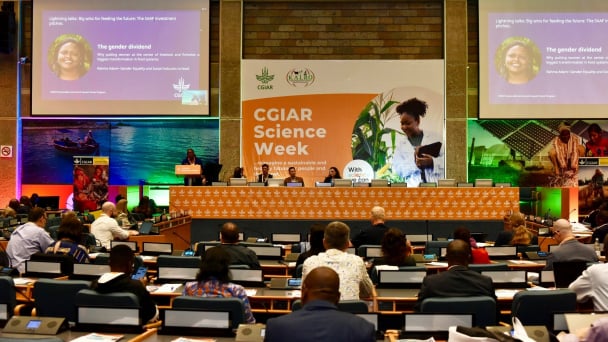
(VAN) The CGIAR’s Sustainable Animal and Aquatic Foods (SAAF) program represents a new approach that emphasizes the transformation of food systems toward sustainability.
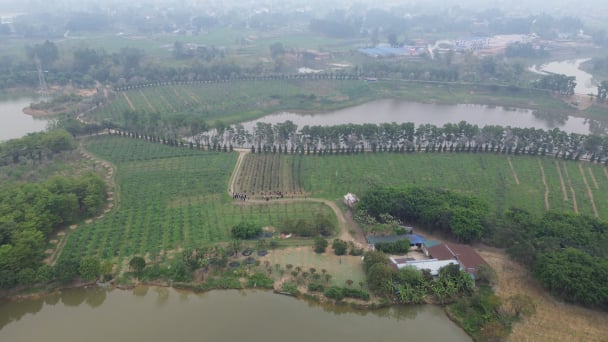
(VAN) Scientists assume that industrial agriculture has been 'outdated.' As a result, a comprehensive overhaul or a revolution in the direction of embracing ecological agriculture is needed.
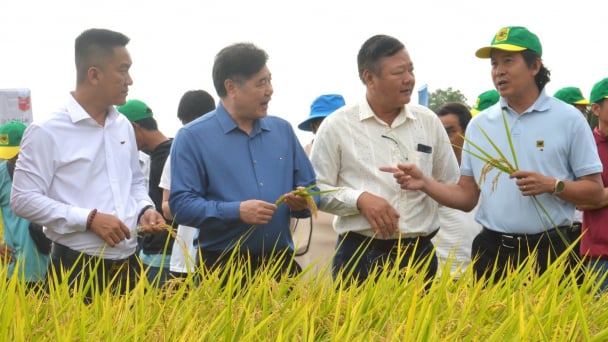
(VAN) The results from pilot fields are catalyzing the expansion of the One million hectares of high-quality, low-emission rice project in Kien Giang.
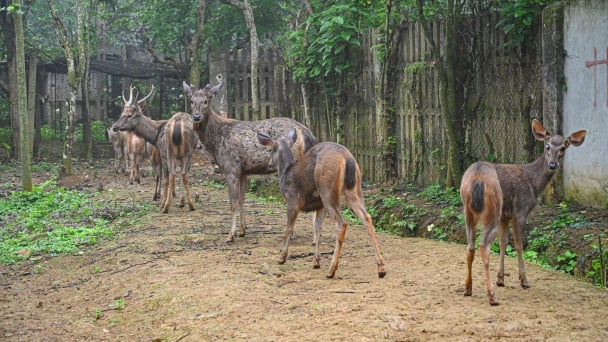
(VAN) On the morning of April 11, Cuc Phuong National Park received 18 individuals of endangered and rare wild animals from Da Nang city.
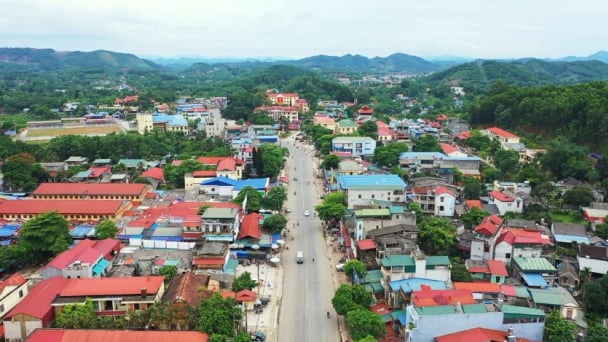
(VAN) FAO supports Vietnam in enhancing survey sampling techniques for the 2025 nationwide agricultural and rural census.
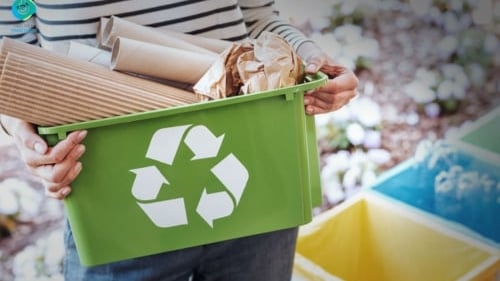
(VAN) By participating in the green transition, manufacturers become an indispensable part of the circular economy, contributing to resource optimization and environmental protection.
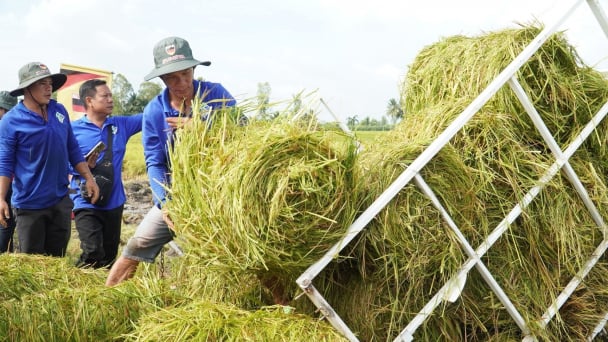
(VAN) The One Million Hectares of High-Quality and Low-Emission Rice Program can generate nearly 14 million tons of straw annually, posing an urgent requirement to diversify straw-based products.